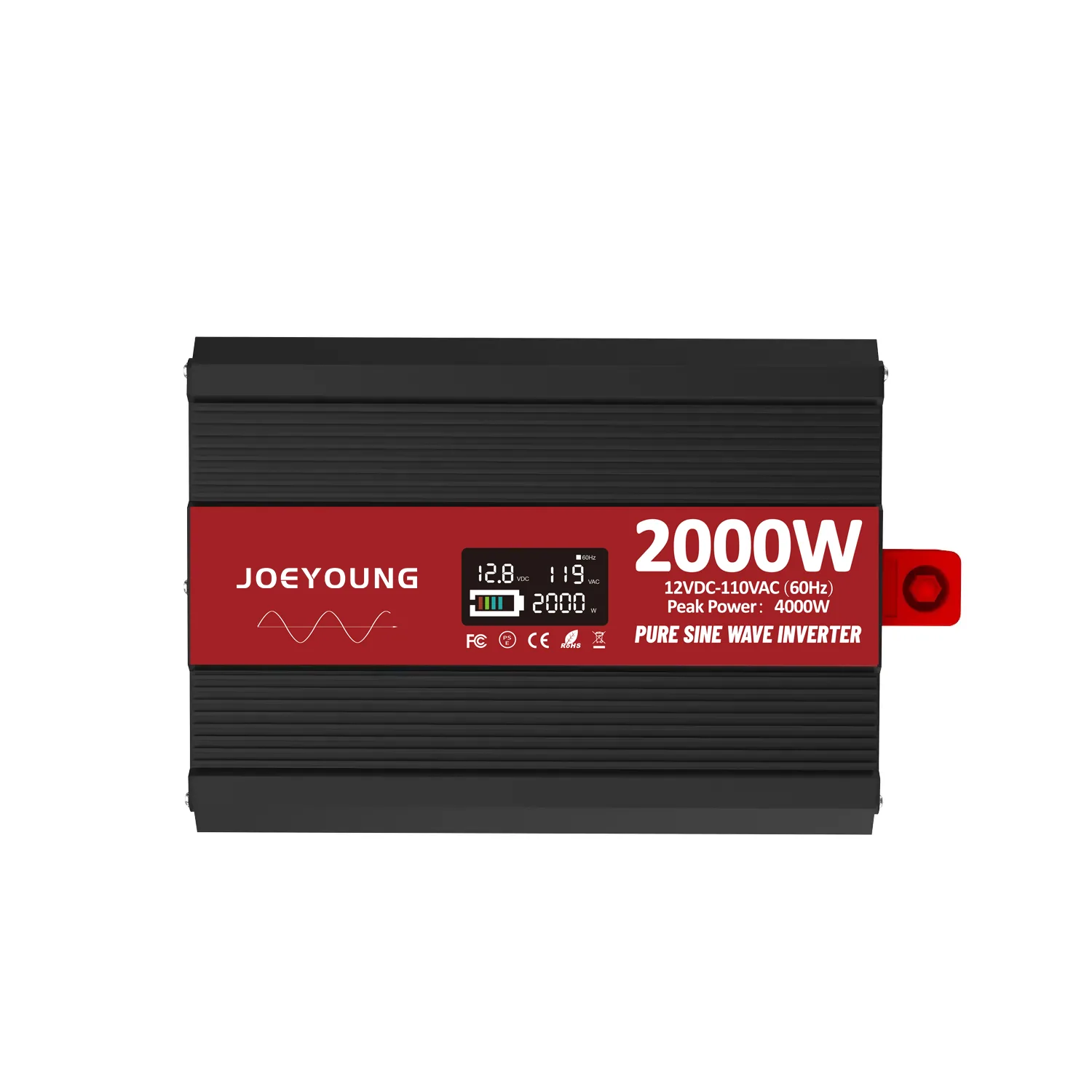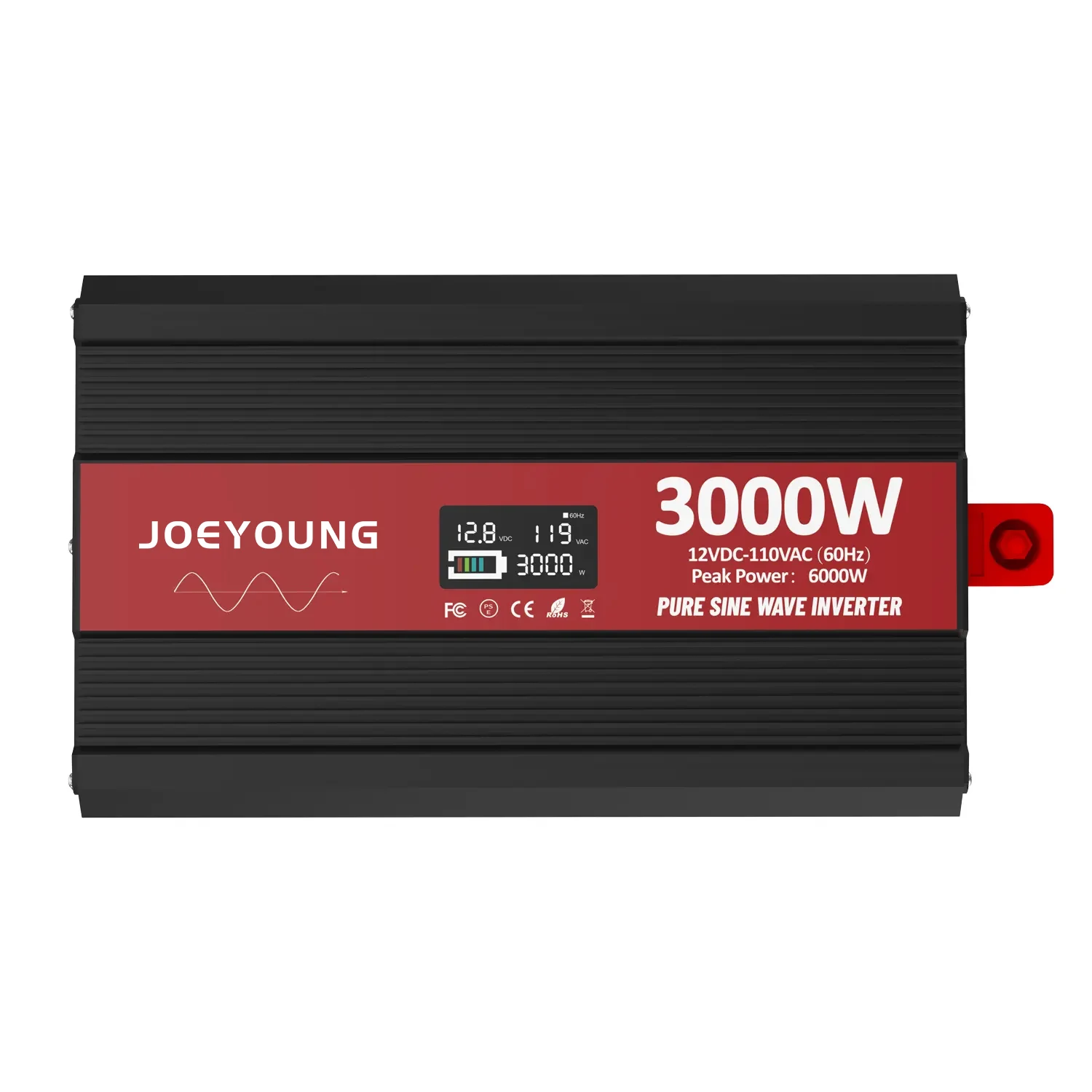There are many inverter brands on the market, and among them, Milwaukee and Joeyoung are two of the most talked-about power equipment brands. Milwaukee, known for its strong battery technology in the tool industry, has recently expanded into the inverter market. On the other hand, Joeyoung focuses on developing new energy inverter products and power storage systems. Joeyoung’s inverters are widely praised in the industry for their high conversion efficiency and excellent cost performance.
In this article, we will dive into the Milwaukee Inverter vs Joeyoung Inverter comparison, looking at their differences in price, materials, compatibility, conversion efficiency, and more — helping consumers make a smarter and more informed choice.

Background of Milwaukee Inverter vs Joeyoung Inverter
Before diving into the features, it’s important to understand the backgrounds of both companies. Knowing a brand’s philosophy can give you clues about what to expect from their products.
Milwaukee
Founded in 1924, Milwaukee Tool is an American company known for high-quality professional tools. Their products are typically designed for construction workers, electricians, plumbers, and serious DIYers. Milwaukee focuses on durability, power, and efficiency. Their inverters often integrate seamlessly with the M18 battery system, making them perfect for people who already own Milwaukee tools.

Joeyoung
Joeyoung, on the other hand, is a newer player in the market. It focuses more on portable energy solutions for outdoor enthusiasts and light users. They offer products that are lightweight, easy to use, and often come with extra features like built-in lights or solar charging compatibility. Joeyoung aims to make inverters more accessible and affordable for the average person.

Power Output, Capacity, and Conversion efficiency
Next, let’s look at power output, inverter capacity, and efficiency which is one of the most critical factors when choosing Milwaukee Inverter vs Joeyoung Inverter.
Milwaukee Inverters
Milwaukee inverters usually have a conversion efficiency between 90% and 93%. This is good, but not as energy-saving as Joeyoung. Over long outdoor use, Milwaukee inverters may waste more energy, so users might need to replace or recharge batteries more often.
The most popular Milwaukee inverter is the M18 Power Supply. It gives 175 watts of continuous power, which is great for small electronics like laptops, phones, lamps, and fans. Even though 175 watts is not very high, the power it gives is very stable and reliable, especially for work sites. Milwaukee focuses more on giving steady, reliable power rather than high wattage.
Some larger Milwaukee models, like the MX FUEL Carry-On Power Supply, can offer up to 3600W peak power (1800W continuous). However, these bigger models are also heavier and much more expensive.
Overall, Milwaukee’s inverters usually have lower wattage (for typical models), but they are extremely stable and dependable
Joeyoung Inverters
Joeyoung inverters use pure copper wires and a smart design to lower power loss. Because of this, Joeyoung inverters can reach over 96% conversion efficiency, making them one of the best in the market.
This high efficiency helps Joeyoung inverters save more energy during long use. They also stay cooler, which makes the battery last longer and reduces wasted energy.
Joeyoung inverters usually offer more power for a lower price. Many models start at 300W and go up to 500W. This means users can power not just small devices like phones and laptops, but also bigger ones like mini-fridges, camping cookers, and CPAP machines.
However, They offer more power, Joeyoung inverters are more flexible and powerful, but they are best suited for casual or light users.
Build Quality and Durability
Design and Build Material
On comparison Milwaukee inverter vs Joeyoung inverter, Milwaukee inverters are built with job sites in mind. They are designed to withstand dust, impact, and rough handling. The housing is usually made from high-grade plastic reinforced for extra strength. Plus, Milwaukee batteries are known for their excellent thermal management and shock absorption, which helps prevent internal damage.
However, Joeyoung focuses more on portability and light use. Their inverters are often lighter, with sleek designs and aluminium shell for the casing that is strong for general use survive repeated drops or harsh work environments. Joeyoung inverter application are ideal for indoor, camping, and car use.

Enhancing User Experience with HD Displays
Milwaukee’s 200W inverter does not come with a screen. If you want a display, you need to buy the 350W model, but the price goes up to $79.99. Even then, the Milwaukee inverter’s screen is not as clear as Joeyoung’s.
Joeyoung, using Joeyoung HD LCD display, lets users easily see important information like battery level, input voltage, output power, and more. This helps users quickly understand how the device is working.
This design is very helpful for people who are not experts in electricity. It makes it easier for them to adjust their power use when needed. Also, Joeyoung’s screen has an inverter alarm feature for show the info from inverter temperature sensor. If there is a problem like low voltage or overheating, it will show an error code to warn the user.

System Protection and Security
Between Milwaukee inverter vs Joeyoung inverter, Joeyoung energy storage inverter system is equipped with overload, short circuit, and over-temperature protection to handle power load changes in different environments. For example, if the load goes beyond what the inverter can handle, the system will automatically lower the output power or cut off the output to prevent overheating or damage from overload.
In addition, Joeyoung’s programming team has set different warning levels using precise algorithms. When the inverter detects abnormal temperature or load, it can automatically adjust or shut down to keep the equipment safe. This ensures that customers always have safe and stable power, even during extreme weather conditions.
Milwaukee inverter vs Joeyoung inverter for protection features:
Milwaukee inverters come with basic overload and short circuit protection, which is good for normal use. However, in extreme conditions like heavy loads or high temperatures, Milwaukee’s protection is simpler. For users who work outdoors for long periods or need very stable power, Milwaukee’s protection features may not be enough.
Ideal Users of Milwaukee Inverter vs Joeyoung Inverter
| Feature | Milwaukee Inverter | Joeyoung Inverter |
|---|---|---|
| Best for | Tool owners | Campers, casual users, travelers |
| Power Output | Moderate (Stable) | High |
| Portability | Good | Excellent |
| Battery System | Milwaukee inverter is more limited in adapting to other battery types, the application scenario is relatively limited, for users with a variety of battery needs, the compatibility is slightly lower than Joeyoung. | Joeyoung inverters support 12V batteries and are compatible with lithium iron phosphate, ternary lithium, lead-acid, and more. Auto-adjust to each battery’s charging needs, giving users flexible battery options |
| Budget | Higher | Affordable |
How To Buy Joeyoung Inverter
Click the picture for more information or go to Inverter Purchase Guide and get the inverter that you need.
Conclusion
Joeyoung inverters stand out in conversion efficiency, display design, cost performance, battery compatibility, and system protection. Joeyoung solar inverter factory will offer you a high quality inverter that suitable for home and business users who need reliable and efficient power.
Compared to Milwaukee inverter vs Joeyoung inverter, Milwaukee inverters are more average when it comes to long-term power use. If you’re looking for high efficiency, stable performance, and good value, Joeyoung inverters are the better choice.
Frequently asked questions
Joeyoung inverters are more energy-efficient, with conversion efficiency over 96%. Milwaukee inverters are slightly lower, usually around 90%–93%.
Joeyoung inverters support a wide range of 12V batteries, including lithium iron phosphate, ternary lithium, and lead-acid batteries. Milwaukee inverters have limited battery compatibility.
oeyoung performs better for long use, it have higher efficiency, heat management, and smart protection features. Milwaukee is stable but may waste more energy over time.

Goodwe and Fronius are two leading brands on the market, each offering unique features, benefits, and price points. This article will compare Goodwe inverter vs Fronius inverters using data and specifications from the latest reviews and technical comparisons.

This article compares Huawei inverter and JOEYOUNG inverter by price, material, compatibility, and efficiency to help consumers choose.

In this article, you will find information on the comparison of Ryobi Inverter and Joeyoung Inverter and some suggestions for choosing the best.
Authors
-
Passionate to education and renewables energy make me enthusiast about making complex technologies accessible to everyone by translating it into a practical and easy to understand. Let's learn and grow together!
View all posts
-
hi I am Jim, an inverter specialist with over 10 years of experience. I previously worked as an R&D engineer at a leading energy company, focusing on inverter design, optimization, and system integration. I have been involved in the development of key technologies and gained comprehensive expertise in both technical innovation and practical applications. Currently, I focus on professional writing to provide clear analysis and practical insights into inverter technology, contributing to its advancement and broader adoption in the industry.
View all posts






